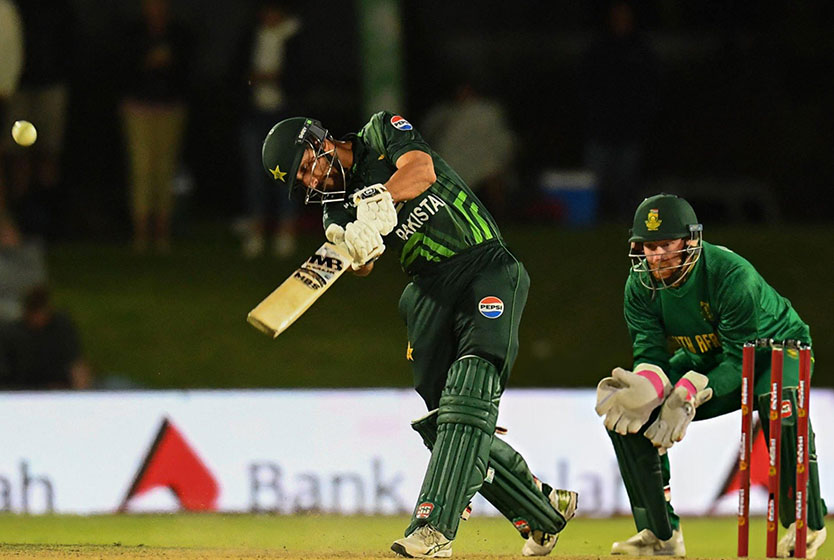
The Stumps Have Ears
If someone invented a Pakistan team that could treat potentially straightforward wins as such, it might just tilt the earth’s axis into another direction entirely. When Pakistan stutter to an unconvincing 60-4 while chasing 240 against South Africa, I hold close that queasy but strangely comfortable state of knowing a loss was coming – of course, the two of us have had plenty of time to get acquainted with each other, given the year Pakistan cricket has had. And while the solid Saim-Salman partnership tried its best to threaten us with a comfortable win, three quick wickets at the rear end resulted in a Pakistan cricket specialty: the creation of a thriller out of nowhere.
Of course, since then, Pakistan has gone on to win that particular game as well as the next, scooping up a third ODI series win in South Africa in the process. But what remains the highlight of the series so far is Salman Ali Agha and Naseem Shah’s partnership for the eighth wicket in the first ODI.
As has been established several times, 2024 just wasn’t Pakistan’s year. Barring the semblance of a resurgence that we saw in the late months of the year, with series wins against England, Australia, and South Africa, the team and fans dealt with losses across months, across formats, and across levels of severity. The moldy cherry on top of Pakistan cricket’s terrible, horrible, no good and very bad year was that the management set-up stayed its turbulent, indecisive self, shaking things up at whim and, understandably, leaving the cricket in disarray behind it.
While I personally believe that everyone would be better off trying to pretend this year didn’t happen, life doesn’t work that way, and cricket seldom forgets. But for my own sake, I choose to remember this year through the scraps of goodness that did shine through, like that first innings against India in New York or the win against Sri Lanka in the Women’s T20 World Cup. The last 2 games of the England test series where, somehow, Pindi spun, or that incisive opening in the first ODI against Australia where Haris Rauf took two wickets in two balls, which showed us, despite losing that game, that we might be coming back.
And now, this:
When Naseem walks out to bat with Salman in the first ODI against South Africa, Pakistan need 31 to win off 33 balls. The equation looks pretty simple, but that is only if one doesn’t factor in the team being 7 wickets down and if one forgets Pakistan’s tendency to crumble at the flutter of a leaf. The good thing about this particular match, however, is that the fan watching at home would feel less alone: the stump mic was so loud that one could hear a second stream of commentary entirely coming from the players themselves.
“Baat suno,” Naseem calls out to Salman before the last ball of the 45th over, “Agar single hua tou karo ge?”
Of course Naseem wants him to take the single. In his career so far (which now spans half a decade, counting from his debut – I was tempted to call ‘short’ in this sentence, considering how young he is), he has obviously been illustrious with the ball, but what often fly under the radar, though, are the inroads he has made with the bat. There have been T20 blitzes (like the one against Afghanistan in the Asia Cup, which is something that still feels a little dream-like to me). There have been gritty Test stands – Naseem holding up one end against Sri Lanka in 2022 and 2023, once for Babar and once for Saud, and my favorite one, a swanky partnership with Abrar against New Zealand at home to draw the match, when the opposition needed a wicket to win. One can tell Naseem is someone who takes his batting seriously – that, or he just takes everything seriously, and this is no exception. Like the great man himself once said – Aap ko pata hai na, saari zimmedari mere oopar hai.
So yes, he wants the single, even if it means that the specialist batter between them won’t be on strike for the next over. And Agha obliges, urging him to take two when he can, berating him when he doesn’t run back – “2 run hain, yaar!”. It wasn’t Naseem’s fault, though – “Yaar woh beech mein aa gaya tha, yaar!” he shouts, gesturing towards Jansen, who cut through the pitch as they were taking a single.
If I were even slightly inclined to do so, I would write a LinkedIn post about this partnership – that tricky situations can be avoided if the stakeholders simply communicate, that knowing what to say at the right time might chalk out more revenue than one expected. And it certainly was refreshing – in an innings where we already had a classic “oops, no one said anything” runout and one that was teetering on the edge of imploding, these two didn’t leave anything unsaid. Sure, they might just have annoyed the fielding side into conceding a win, but through the guiding and the chiding, they made sure they stayed there.
If Naseem has been a glimmer of impetus and initiative this entire year, Agha has been a wall. Few would have thought that Salman Ali Agha would have become what he is now to Pakistan cricket, the calm, smiling character who adjusts his gloves mid-over more times than he perhaps breathes. A handful of Test centuries, a slew of industrious knocks in both the longer formats, and several resourceful stints with the ball later, we now know that Salman Ali Agha might not be able to do everything – but he will certainly do a lot, especially on days where few others decide to show up. Above all, Agha has churned himself out as a makeshift answer to the quintessential Pakistani collapse – when nothing works, he bats with the tail (and how).
“3 ballein hain, 3 run kar le. Aakhir tak kyun jaayega,” Naseem coaches in the penultimate over.
“2 ballein hain,” corrects Agha. Here, I imagine Naseem lifting his hand to count them out on his fingers, only to be interrupted by his chunky batting glove.
“3 ballein hain!”
“2 ballein hain!” Agha yells, and I imagine a little kid shutting his younger brother up.
But though it is usually Salman who keeps the last threads of a batting lineup from fraying out, it is Naseem who seems to be holding it together tonight – “Yaar aap easy hojao, mujhe bhi out karaado ge,” “Agha ghalat shot na khel yaar!”, going as far as to play makeshift coach, instructing Salman to watch the ball properly. I don’t know about anyone else, but it is strangely comforting to know that the people on the pitch have the same turbulent anxieties as me, watching on my couch from thousands of miles away: that I might have more valuable insight to give to the people actually playing on the ground, that someone will skew the ball high because of a stupid, stupid shot, that an easy situation might become way too mucky to salvage, and worse, that someone might get out. But no one does – through the bickering and instructing and digging out runs, the two find a way to stick it out and win.
This wasn’t a good year, but it isn’t leaving us exactly stranded. At the very least, one can be assured that Pakistan cricket still retains its capability to do what it does best: surprise you with their best selves when no one’s looking, eck out a laugh or two on the pitch, and for what it’s worth, it keeps you hoping, until the last ball, until the last partnership. And hey, even when nothing is working out, a simple piece of advice might go a long, long way: yaar, aap easy ho jaao.

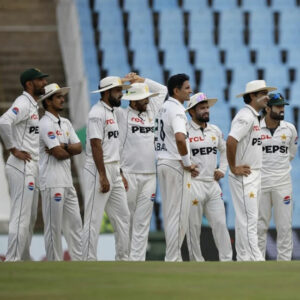
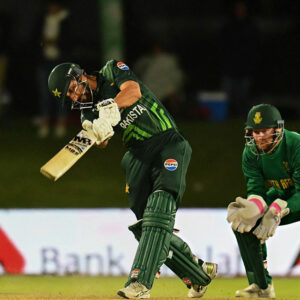
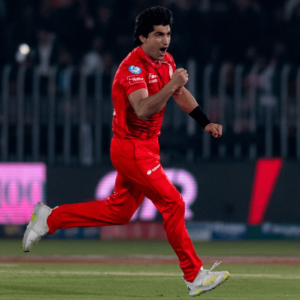
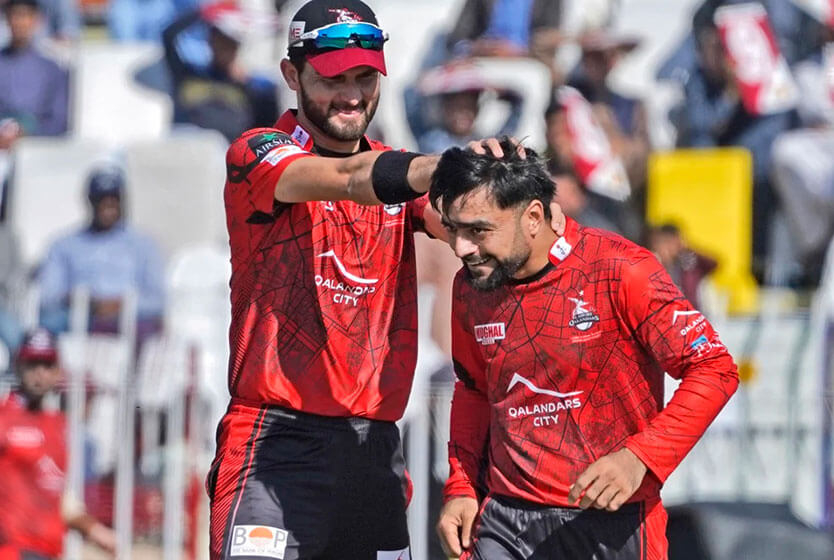
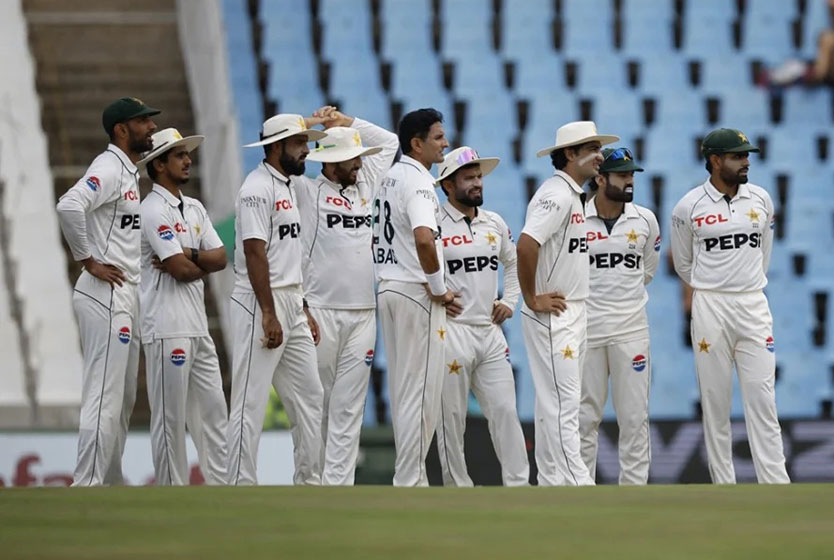

Asim Fayaz
Haha! You missed the "Kuttay ki taranh bol raha tha" from Agha at the end. 😅